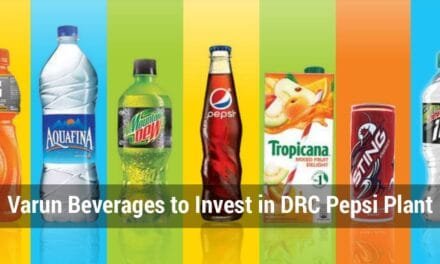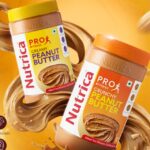Coca Cola, one of the most famous and beloved brands in the world, has a long and fascinating history. The history of the brand Coca Cola can be traced back to the late 19th century in Atlanta, Georgia.
Table of Contents
Coca-Cola is certainly one of the most recognisable brands in the world. The signature red and white Coca Cola logo can be found on everything from vending machines to billboards. The company has a long and fascinating history, dating back to its creation in 1886 by Atlanta pharmacist Dr. John S. Pemberton. Since then, one of the most popular beverages in history, Coca-Cola has evolved into a global business operating in more than 200 countries, with more than 1.9 billion Coca-Cola beverages sold around the world each and every day.
Even with remarkable accomplishments, the history of Coca-Cola has not gone without some level of controversy. Over the years, the company has faced accusations of everything from exploiting workers to contributing to obesity and other health problems. However, Coca-Cola has also been credited with creating some of the most memorable advertising campaigns of all time. Its iconic branding has become a symbol of American culture and capitalism across the globe.
Origins and History of Brand Coca Cola
Coca Cola, one of the most famous and beloved brands in the world, has a long and fascinating history. The origins of Coca Cola can be traced back to the late 19th century, when a pharmacist named John Pemberton invented a new type of carbonated beverage in Atlanta, Georgia.
John Pemberton’s Invention
John Pemberton was a pharmacist who had been wounded in the Civil War and became addicted to morphine as a result. Seeking a cure for his addiction, he began experimenting with various ingredients, including coca leaves and kola nuts. In 1886, he finally hit upon the perfect formula for a new type of soda, which he called Coca Cola.
The original recipe for Coca-Cola included coca leaves, kola nuts, sugar, lime juice, vanilla, caramel, and other ingredients. Pemberton initially sold Coca-Cola as a medicine, claiming that it could cure everything from headaches to impotence. However, it quickly became clear that Coca-Cola was more popular as a refreshing beverage than as a cure-all.
Early Marketing Strategies
As Coca Cola became more popular, Pemberton and his collaborators started to develop new, effective marketing strategies to promote the drink. One of their most effective strategies was to distribute free samples of Coca Cola at soda fountains and drugstores. This helped to spread the word about the new drink and build a loyal customer base.
Another crucial marketing strategy was to create a distinctive brand identity for Coca-Cola. Pemberton’s bookkeeper, Frank Robinson, came up with the name “Coca Cola” and created the iconic script logo that is still used today. The company also developed a distinctive red and white colour scheme for its packaging and advertising, which helped to make Coca-Cola instantly recognisable.
Overall, the origins of Coca Cola are a tribute to the power of innovation, marketing, and branding. Coca-Cola is one of the most recognisable brands in the world right now, and its history continues to serve as an example for entrepreneurs and marketers around the globe.
Growth and Expansion
Coca-Cola has always placed a strong emphasis on development and expansion. From its early days as a local soda fountain drink to its current status as a global brand, Coca Cola has always been looking for ways to expand its reach and increase its market share. The development of the bottling system, the company’s entry into foreign markets, as well as its inventions and diversification, will be some of the major turning points in the growth and expansion of Coca-Cola that will be covered in this article.

Introduction of Bottling System
The development of the Coca Cola bottling system was one of the crucial turning points in Coca-Cola’s expansion. Coca-Cola was not widely spread before this and was only sold at soda fountains. Benjamin F. Thomas and Joseph B. Whitehead, two merchants from Chattanooga, won the exclusive rights to bottle and market Coca-Cola in 1899. As a result, Coca-Cola became a more widely known beverage, and its national brand recognition increased.
With the invention of the contour bottle in 1915, the bottling process was substantially improved in the early 20th century. This recognisable style served as a means of differentiating Coca-Cola from its rivals and came to represent the essence of the company.
Coca Cola Goes International
The expansion of Coca-Cola into international markets was another significant turning point in its development. The first worldwide Coca-Cola bottling facility in Canada was built in 1906, and the company expanded internationally during the 20th century.
Coca-Cola is now available in more than 200 nations, and the company has made significant inroads in several emerging markets. In recent years, the company has concentrated on growing its footprint in regions with tremendous growth potential, such as Latin America, Asia, and Africa.
Innovations and Diversification
Coca-Cola has concentrated on innovation and diversification as a strategy for fostering growth in addition to broadening its geographic reach. The launch of Coca-Cola Freestyle is one of the most important breakthroughs in recent years. More than 100 different Coca-Cola beverages are available for guests to select from at this soda fountain with a touch screen.
Coca-Cola recently diversified its product lineup with the addition of new drinks like Honest Tea, Smartwater, and Dasani bottled water. With this diversity, Coca-Cola has been able to access new revenue streams while ensuring its relevance in a changing market.
| Also Read: History of brand Pepsi from its Inception to Present Day
History of Brand Cola Cola Some FAQs
Ever wondered Why It’s Called Coca Cola
The name was derived from the two major ingredients used in the original formulation: the coca leaf and the kola nut. The coca leaf has been replaced by caffeine, but the iconic name still remains.
Coca Cola was originally marketed as a brain stimulant
In early advertisements, Coca-Cola was described as an important brain tonic, due to the properties of the Kola nuts. Dr. Pemberton promoted his original formulation as a non-alcoholic health tonic that supposedly had mental benefits for users
The First Soft Drink in Space
In the mid-1980s, the Coca Cola company came up with an ambitious plan to offer NASA astronauts the chance to drink their favourite drink. In order to create special “Coca-Cola Space Cans” with a modified sipper and opening mechanism, the Coca-Cola Company invested a significant amount of time and money. Finally, in July 1985, astronauts on NASA’s Challenger space shuttle carried Coca-Cola Space Cans that were specifically designed for space travel.
Who Designed the Iconic Coke Bottle?
Coca-Cola organised a competition in 1915 and asked designers to create a special bottle for them. Earl Dean, a bottle designer, designed the iconic Contour Bottle. Dean took inspiration from the cocoa pod and designed the unique bottle that we all know today.
How Much Water Is Needed to Make Coca Cola?
Some estimates state that Coca-Cola factories use nearly 300 billion litres of water annually. The average amount of water required for making 1 litre of Coca-Cola ranges from 1.5 to 3 litres. This water is used mainly as an ingredient as well as for canning, bottling, sterilisation and transportation.

















